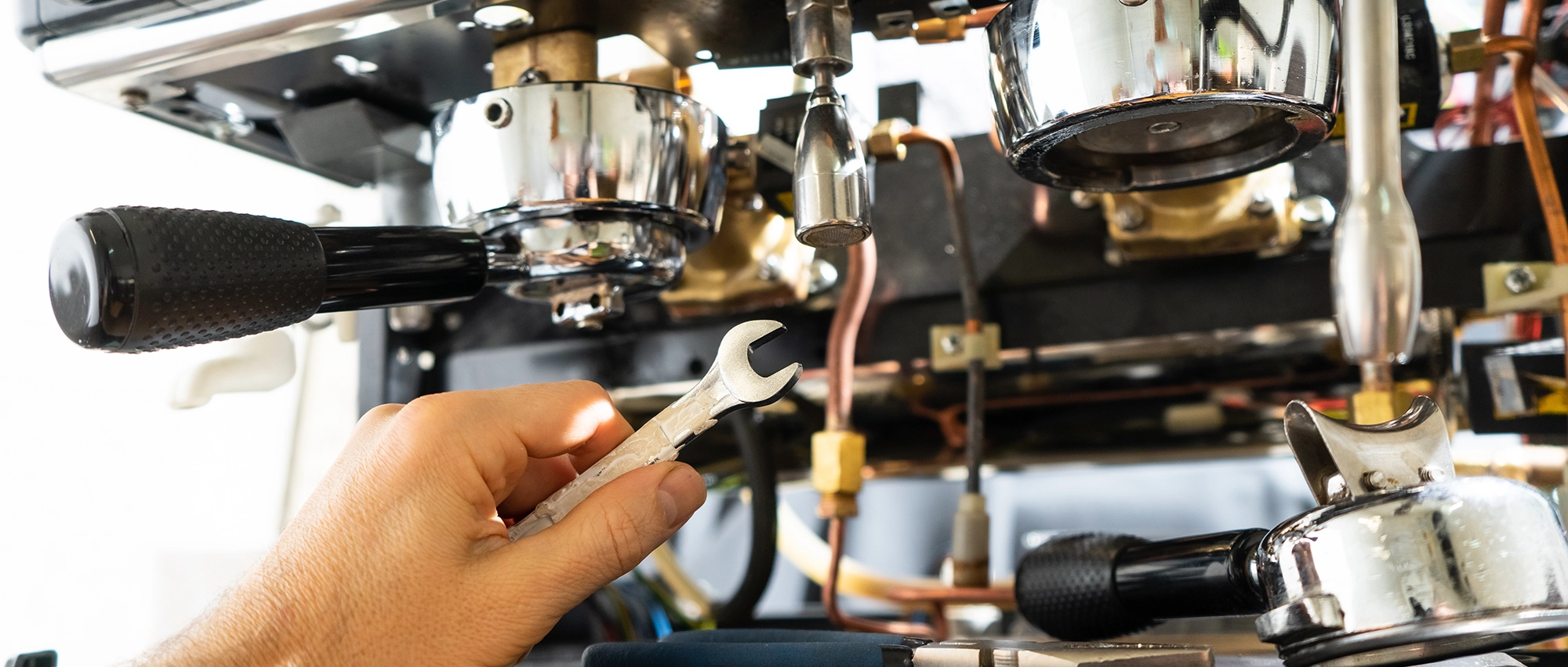The Future of Coffee: Opportunities Amid Market Evolution (2025-2030)

The Future of Coffee: Opportunities Amid Market Evolution (2025-2030)
The coffee industry is experiencing a transformative period that, while presenting challenges, also creates unprecedented opportunities for growth and innovation. As we progress through 2025, evolving market dynamics are reshaping the industry in ways that favor prepared, quality-focused businesses. Understanding these trends is crucial for entrepreneurs and established operators looking to capitalize on the changing landscape.
Current Market Reality: Strong Growth Despite Price Evolution
The coffee market demonstrates remarkable resilience and growth potential even as prices adjust to reflect true market value. The global coffee market is estimated to be worth $138.37 billion in 2025 and is projected to grow to $174.25 billion by 2030, with a robust CAGR of 4.72% during the forecast period.
This growth story becomes even more compelling when examining alternative projections. The global coffee market size was estimated at $269.27 billion in 2024 and is projected to reach $369.46 billion by 2030, growing at a CAGR of 5.3%. These figures demonstrate that despite price increases, global demand continues to expand driven by emerging markets, premium segment growth, and evolving consumer preferences.
Coffee prices have reached historic levels, with Arabica coffee hitting $3.48 per pound in early 2025. Rather than viewing this as a crisis, successful operators are recognizing this as a market correction that validates coffee as a premium product worthy of proper pricing.
The Premium Market Opportunity: Quality Commands Value
One of the most exciting developments in the coffee industry is the accelerating premiumization trend. Single-origin and specialty coffees are experiencing exceptional growth, with an expected CAGR of 6.89% from 2025 to 2030. This represents a fundamental shift where consumers increasingly value quality, transparency, and unique experiences over simple affordability.
This trend creates significant opportunities for coffee shops and roasters who focus on quality. As one industry expert noted, “We expect prices to rise, but in some ways, this may be the shift that has been needed for some time: to break through the artificial ceiling that has kept coffee undervalued as a luxury product.”
Emerging Markets Drive Global Expansion
The global expansion of coffee culture presents tremendous growth opportunities. China’s coffee consumption has surged by nearly 150% over ten years and is projected to reach 6.3 million bags. The emergence of major players like Luckin Coffee, which operates over 20,000 stores, demonstrates the massive potential in previously tea-centric markets.
In December 2024, Coffee Island, Greece’s largest food service chain, introduced its first outlet in India with plans to expand to 20 locations by March 2026 and 250 locations by 2029. These expansion stories highlight the global appetite for quality coffee experiences.
Supply Chain Resilience: Innovation and Adaptation
While supply challenges exist, the industry is responding with remarkable innovation and resilience. Major coffee companies are investing heavily in climate adaptation and sustainable practices that ensure long-term supply security.
Technology-Driven Solutions
The industry is embracing technology to address supply challenges. Companies like Compound Foods are developing innovative platforms for sustainable coffee production, while major producers are investing in climate-resistant varieties. Over 200,000 coffee farmers are now using improved varieties, with more than 300 million plantlets distributed across 11 countries since 2010.
Climate-resistant varieties like Cenicafé 1 offer promising solutions. This variety is resistant to diseases like leaf rust, can be grown in higher temperatures, produces more coffee beans per tree, and represents “a profitable, sustainable option for farmers as the world warms and cools.”
Strategic Supply Chain Investments
Major companies are securing their supply chains through direct investment. Starbucks announced purchases of farms in Guatemala and Costa Rica, while European roaster Lavazza has invested over $1.5 million to revive Cuba’s coffee industry. These investments demonstrate confidence in the industry’s long-term prospects.
Profitable Strategies for Coffee Businesses
Operational Excellence Through Better Equipment
Smart coffee shop operators are discovering that investing in quality equipment is more crucial than ever. Professional-grade espresso machines and precision grinders maximize extraction efficiency, reduce waste, and ensure consistency that justifies premium pricing.
Many successful operators are turning to in-house roasting as a game-changing strategy. By sourcing green coffee directly and roasting on-site, coffee shops can reduce their coffee costs by up to 50% while gaining complete control over quality and freshness. As one operator noted, “We were paying anywhere from $9 to $11 per pound for roasted coffee. Now, we’re paying closer to $4 or $5 per pound.”
Value-Added Services and Experiences
Forward-thinking coffee businesses are expanding beyond traditional offerings. The growing demand for café-style experiences in workplaces presents new B2B opportunities. Companies are introducing advanced coffee machines and curated specialty blends to boost productivity and employee satisfaction, creating steady demand for coffee suppliers who can provide customized solutions.
The workplace coffee market is experiencing particular growth as businesses recognize coffee quality as an employee retention and satisfaction tool. This B2B segment offers coffee equipment providers and service companies significant expansion opportunities.
Menu Diversification and Premium Positioning
Rather than competing on price, successful coffee shops are differentiating through quality and experience. The growth of ready-to-drink coffee segments, functional and specialty coffee offerings, and customized brewing methods allows operators to capture higher margins while meeting evolving consumer preferences.
Coffee shops that position themselves as premium experiences rather than commodity providers are finding consumers willing to pay for quality. This shift rewards operators who invest in proper training, quality equipment, and consistent execution.
Regional Growth Opportunities
Asia-Pacific: The Growth Engine
Asia Pacific represents the fastest-growing coffee market, projected to grow at a CAGR of 6.2% during 2025-2034. This growth is driven by expanding coffee culture in traditionally tea-drinking nations and rising disposable incomes. For equipment suppliers and coffee businesses, this represents a massive expansion opportunity.
Europe: Stable Premium Market
Europe continues to dominate with 34.1% market share in 2024, led by Germany’s robust per capita consumption of 6.5 kg annually. This mature market provides stability and serves as a model for premium coffee culture development in emerging markets.
North America: Innovation Hub
North America maintains a significant 28% market share while serving as an innovation hub for new coffee technologies, brewing methods, and business models. The region’s mature market provides a testing ground for concepts that can be exported globally.
Equipment Investment as Competitive Advantage
The current market environment makes quality equipment investment more critical than ever. Professional coffee equipment enables businesses to:
Maximize Efficiency: Modern espresso machines and grinders optimize extraction, reducing waste and ensuring consistent quality that commands premium pricing.
Reduce Operating Costs: Energy-efficient equipment can decrease consumption by 20-40% compared to older models, providing immediate operational savings.
Enable Premium Positioning: Quality equipment allows operators to consistently deliver the exceptional coffee experiences that justify higher prices in today’s market.
Support Growth: Reliable, professional equipment minimizes downtime and supports increased volume as businesses expand.
Innovation Drives Industry Evolution
The coffee industry is embracing innovation across multiple fronts. Advanced brewing technologies, sustainable production methods, and new product categories are creating opportunities for growth and differentiation.
Sustainable Practices Create Value
Sustainability initiatives are becoming profit centers rather than cost centers. Consumers increasingly seek out businesses that demonstrate environmental responsibility, allowing operators to command premium pricing for sustainable practices.
Organic coffee segments are experiencing the fastest growth, driven by health-conscious consumers willing to pay more for products aligned with their values. This trend rewards businesses that invest in sustainable sourcing and operations.
Technology Integration
Mobile app integration, remote diagnostics, and precision brewing technologies are enabling operators to optimize performance, reduce costs, and enhance customer experiences. These technological advances provide competitive advantages for early adopters.
Building Resilient Business Models
Focus on Quality and Consistency
The most successful coffee businesses in today’s market are those that prioritize quality and consistency above all else. As prices increase, consumer expectations for exceptional experiences also rise. Businesses that deliver consistent, high-quality products find customers willing to pay premium prices.
Diversified Revenue Streams
Smart operators are developing multiple revenue streams including retail coffee sales, equipment services, training programs, and corporate partnerships. This diversification provides stability and growth opportunities beyond traditional café operations.
Strategic Partnerships
Successful coffee businesses are building strategic partnerships with equipment suppliers, training organizations, and technology providers. These relationships provide competitive advantages through better pricing, technical support, and market insights.
Long-Term Market Outlook: Reasons for Optimism
The long-term outlook for the coffee industry remains overwhelmingly positive. Global consumption continues to grow, emerging markets present vast opportunities, and premiumization trends support healthy margins for quality-focused operators.
Growing Global Demand
Coffee consumption is expanding globally, with particular strength in emerging markets. This growth provides opportunities for businesses at every level of the supply chain, from equipment manufacturers to coffee shop operators.
Innovation-Driven Solutions
Ongoing innovation in farming techniques, processing technologies, and brewing equipment continues to improve efficiency and quality while addressing supply challenges. These advances support industry growth and profitability.
Premium Market Expansion
The global trend toward premium coffee experiences creates opportunities for businesses that invest in quality equipment, training, and customer experience. This premiumization supports healthier margins and sustainable business models.
Strategic Recommendations for Success
Invest in Quality Infrastructure
Businesses that invest in professional-grade equipment position themselves for long-term success. Quality coffee equipment from trusted suppliers ensures consistent results, reduces operating costs, and supports premium positioning.
Embrace Training and Education
Proper training maximizes equipment investment and ensures consistent quality delivery. Businesses that prioritize education for their teams consistently outperform those that don’t.
Build Strong Supplier Relationships
Partnering with reliable equipment suppliers and service providers creates competitive advantages through better pricing, technical support, and access to latest innovations.
Focus on Customer Experience
In a market where quality commands premium pricing, exceptional customer experience becomes the primary differentiator. Businesses that consistently deliver outstanding experiences thrive regardless of price pressures.
Conclusion: A Bright Future for Prepared Businesses
The coffee industry stands at an exciting inflection point. While market dynamics are evolving, these changes create significant opportunities for businesses that adapt strategically. The key to success lies in embracing quality, investing in proper equipment and training, and positioning for the premium market that continues to expand globally.
For coffee shop operators, equipment suppliers, and industry professionals, the current environment rewards those who view challenges as opportunities for differentiation and growth. The businesses that will thrive are those that recognize this evolution as the emergence of a more sustainable, quality-focused coffee economy that properly values the craft and experience of exceptional coffee.
Success in this new landscape requires partnership with experienced equipment providers who understand both the technical requirements and business dynamics of the modern coffee industry. By focusing on quality, efficiency, and customer experience, coffee businesses can not only survive but thrive in this evolving market environment.
Gary Downey
Gary Downey
Tags :
Coffee U Sunday: Weekly Coffee Business Education
Get expert coffee insights delivered to your inbox every Sunday. Equipment guides, brewing tips, business strategies, and industry trends to help your business succeed.
Categories
Categories
- Coffee Brewers (1)
- Coffee Business Success (8)
- Coffee Grinders (1)
- Coffee Shop Owners (7)
- Coffee Technology (3)
- Cold Brew Coffee (2)
- Espresso Machines (8)
- Espresso Shots (3)
- La Marzocco (2)
- Maintenance & Service (2)
- Specialty Coffee Drinks (3)
- Water Treatment (1)
📚 Equipment Guides
Comprehensive breakdowns of different machine types, helping you make informed purchasing decisions
 Maintenance Tips
Maintenance Tips
Professional techniques to keep your equipment running at peak performance and extend its lifespan
 Brewing Science
Brewing Science
Understand the ‘why’ behind extraction, temperature stability, and equipment design
 Troubleshooting Help
Troubleshooting Help
Common problems and solutions to minimize downtime and service calls
 Business Insights
Business Insights
ROI calculations, workflow optimization, and equipment selection for your specific needs
 Technology Explained
Technology Explained
Demystifying features like PID control, pressure profiling, and heat exchange systems
Coffee U Sunday: Weekly Coffee Business Education
Get expert coffee insights delivered to your inbox every Sunday. Equipment guides, brewing tips, business strategies, and industry trends to help your business succeed.
Share
Use our search function or browse by category to find exactly what you need. Can’t find an answer? Contact us directly, your question might inspire our next Coffee U article! As we grow, so will this resource, shaped by the real needs of coffee professionals like you.
Start exploring Coffee U today and discover why Bean & Brew Technologies is committed to elevating the coffee industry through education and exceptional service.
Have a question?
We're here to help.









